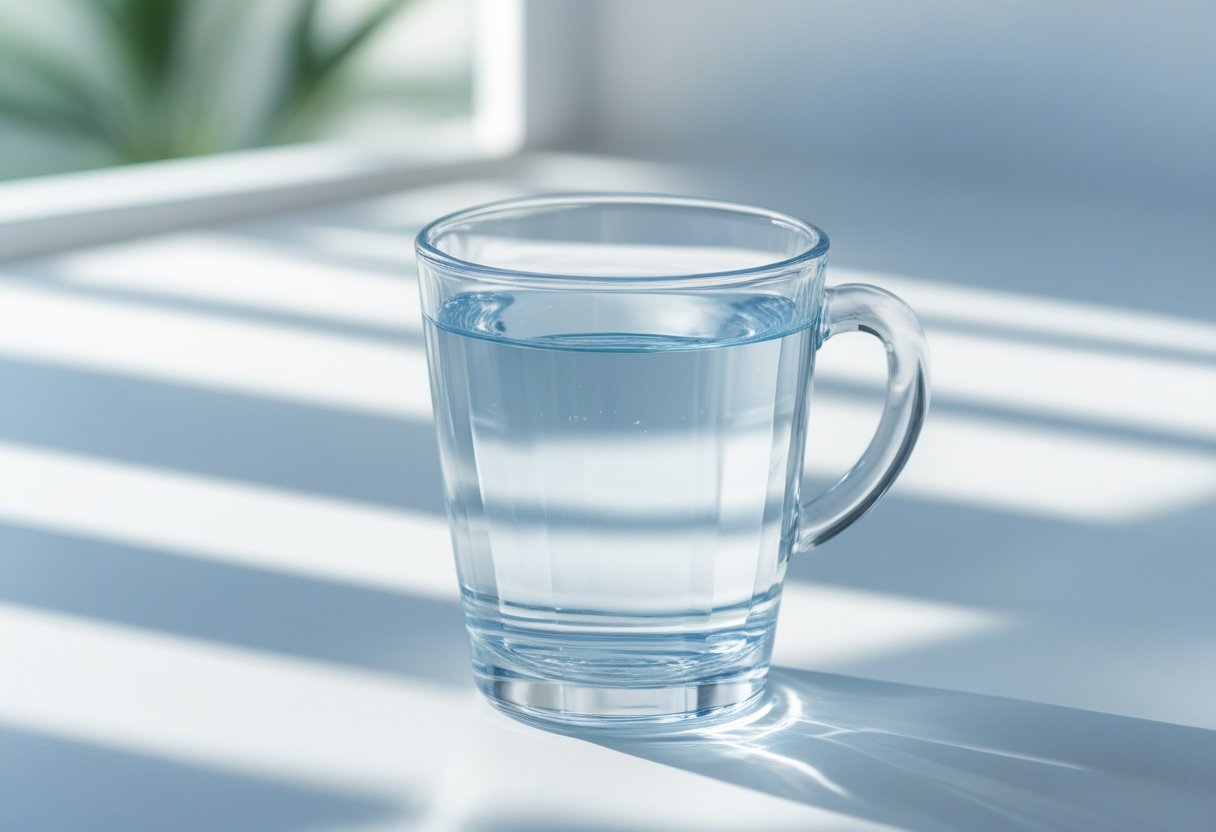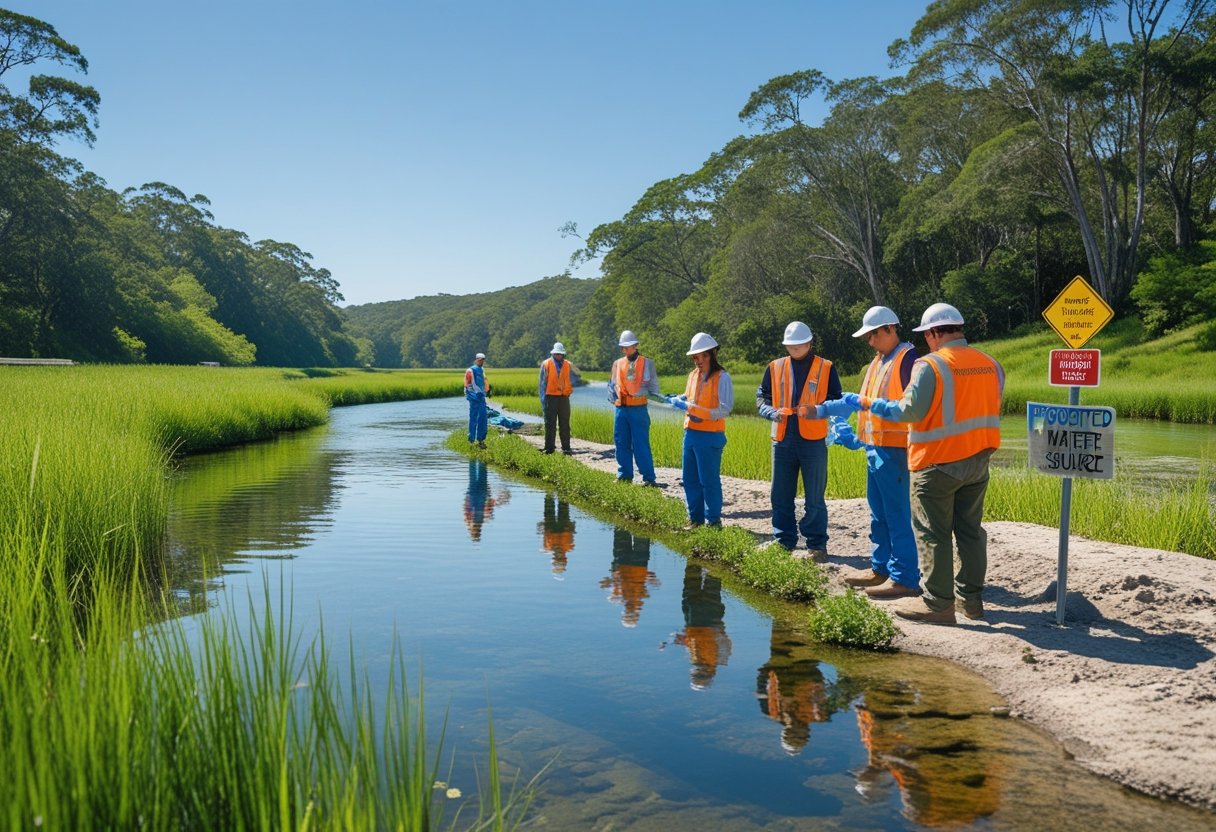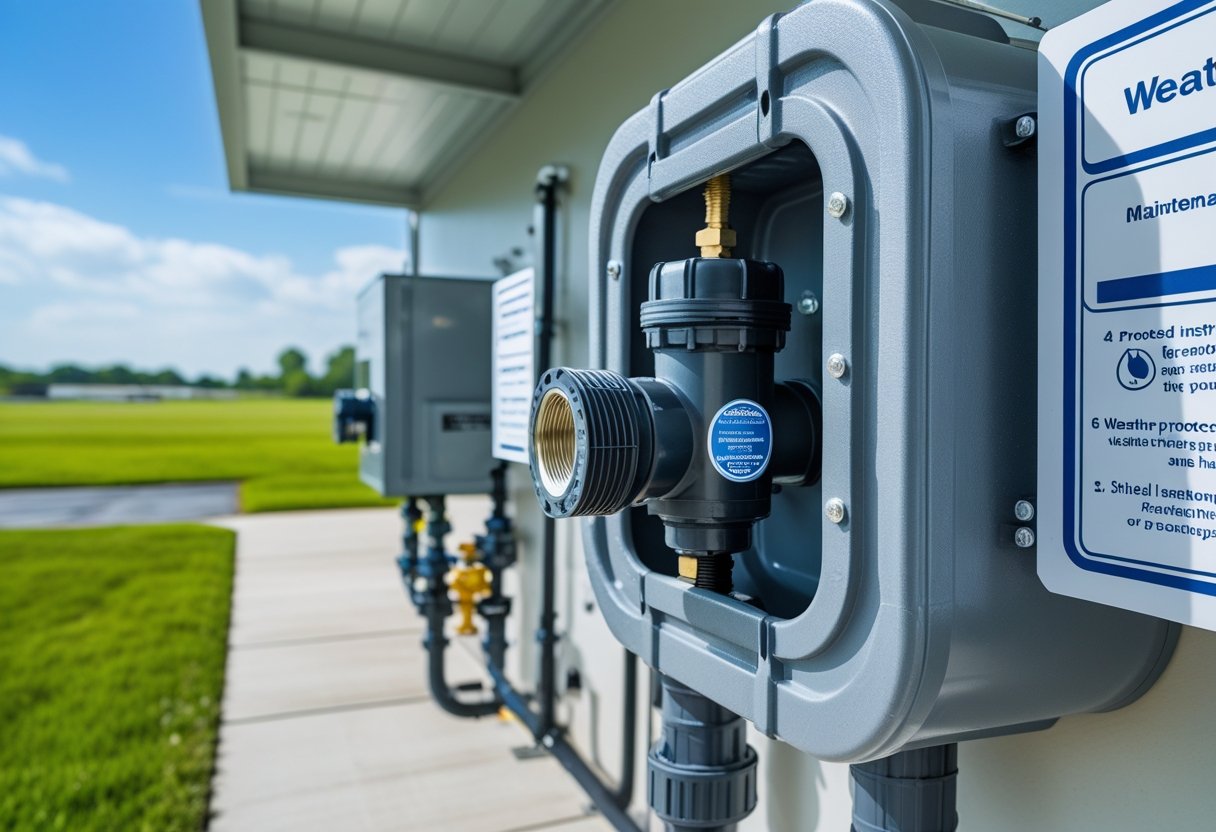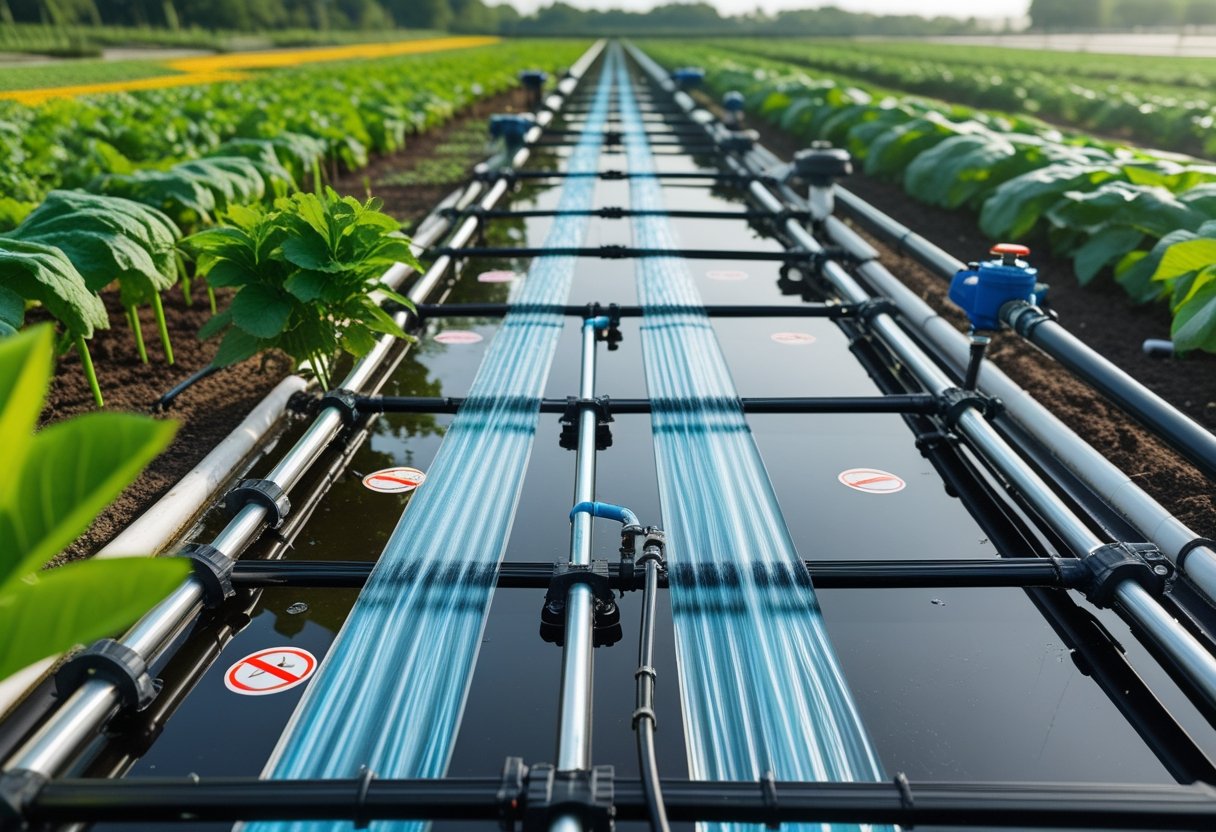Water safety really starts at home—or at your business—by making sure backflow doesn’t mess up your clean water. Backflow, if you’re not familiar, is that sneaky problem where dirty water manages to find its way back into the clean supply. The most reliable way to keep your water safe? Use certified backflow prevention devices, get them tested regularly, and don’t skip on maintenance. These habits help block contaminants from getting into what you drink or cook with—so, yeah, kind of a big deal.
If you get the basics of backflow prevention, you’re already ahead. Reliable backflow services and following the rules keep your water safe. Companies like Pacific Backflow offer fast, professional testing and repairs for San Diego County, so you don’t have to worry about your water supply.
Just keeping up with simple things—like scheduling your backflow test and fixing issues quickly—can save a lot of headaches. It’s not complicated, but it does matter for your health and the community.
Understanding Water Safety
Water safety is about keeping your water free from stuff that can make you sick. It’s about knowing what can contaminate your water, why clean water is important, and what can go wrong if you ignore water safety basics.
Importance of Clean Water
Clean water is pretty much non-negotiable for your health. It keeps you hydrated, helps you cook, and lets you keep your home clean. When your water’s free from germs and chemicals, you’re less likely to get sick.
Safe water protects your family from things like diarrhea, infections, and sometimes even worse. Most places have laws to make sure your water’s up to standard.
Keeping water clean means watching what gets into your pipes. Your backflow preventer is part of this—it stops dirty water from sneaking back into your supply. Regular checks and upkeep on these devices go a long way.
Common Water Contaminants
Water can pick up all sorts of trouble: bacteria, viruses, chemicals, and sediments. Bacteria and viruses usually come from sewage or animal waste and can make you sick.
Chemicals like pesticides, fertilizers, and heavy metals might get in from soil or industrial runoff. These are definitely not something you want in your glass.
Sediments like dirt or rust? They don’t always make water unsafe, but they can mess with your plumbing or make the water taste weird.
A backflow preventer blocks these things from getting into your drinking water. Keeping your system in good shape lowers the odds of anything gross reaching your taps.
Risks of Poor Water Practices
If you ignore water safety, contaminants can get into your supply. That means higher risk for stomach bugs, infections, and even long-term health trouble.
Skip backflow prevention and you might let dirty water run backward into your pipes. That’s how bacteria and chemicals spread through your home or business.
Bad maintenance can cause leaks or failures, raising the odds of contamination and possibly leading to expensive fixes.
Annual backflow testing with pros like Pacific Backflow helps you dodge these risks and keeps your water safe.
What Is Backflow and Why It Matters
Backflow is just water going the wrong way in your pipes. When that happens, dirty or unsafe water can mix with your clean supply. If you know what causes backflow and how risky it is, you’re better equipped to protect your water.
Definition of Backflow
Backflow means water moves backward through your pipes, not the way it’s supposed to. Instead of clean water flowing in, polluted water can get pulled in from things like irrigation systems or drains.
There are two main types:
- Backpressure: When the pressure in your pipes is higher than the main supply, pushing water the wrong way.
- Backsiphonage: When the main supply loses pressure, creating a vacuum that sucks in contaminated water.
Both can mess up your drinking water and cause health problems.
How Backflow Occurs
Backflow usually happens when there’s a sudden pressure change. Maybe a water main breaks or a neighbor uses a ton of water at once—boom, pressure drops, and backsiphonage can pull dirty water into your lines.
Backpressure is when something like a pump or boiler in your system pushes water back into the main line, mixing unsafe water with the clean stuff.
Cross-connections—spots where your drinking water line meets a potential source of contamination—make backflow more likely. That’s why having backflow preventers really matters.
Consequences of Backflow Incidents
If backflow happens, your drinking water can pick up bacteria, chemicals, or waste. That can lead to stomach bugs, skin issues, or breathing problems.
Kids, older folks, and anyone with a weak immune system are especially at risk. Businesses and communities can get hit with health code violations and costly repairs, too.
Regular testing and maintenance on backflow preventers are a must. Pacific Backflow covers San Diego County with trusted service to keep your water safe and you in the clear with local laws.
Regulations and Compliance for Backflow Prevention
Rules about backflow prevention are there for a reason: to keep your water clean. Following local and national standards, dealing with the right agencies, and keeping your paperwork in order is part of the deal. It’s not just about avoiding fines—it’s about protecting your water and everyone who uses it.
Local and National Water Safety Standards
Your backflow system needs to meet both local and national codes. The International Plumbing Code (IPC) sets the big-picture rules, but local water districts often add their own, depending on local risks.
Most of the time, you’ll need annual testing to make sure your device works. Some setups, like irrigation or industrial systems, might need specific types of preventers.
Rules can change, so it’s smart to check in with your local water district now and then. Staying on top of this keeps you and your community safe.
Key Regulatory Bodies
A few main groups make sure backflow prevention rules get followed:
- Local Water Districts – They enforce the rules where you live.
- State Authorities – States like California have their own certification and reporting standards.
- International Plumbing Code (IPC) – Sets the national framework.
You’ll usually need certified testers, and local authorities might inspect your property. Pacific Backflow’s certified techs help you meet all these standards, so you don’t have to sweat it.
Reporting and Documentation Requirements
After your backflow device gets tested or fixed, you have to send reports to your local water authority. Good documentation proves you’re following the rules.
Typically, you’ll need to submit:
- Test results (pass or fail)
- Details on any repairs or replacements
- Annual inspection or certification records
Miss a report or turn it in late, and you could face fines or even have your water shut off. Many folks let experts like Pacific Backflow handle the paperwork—they’ll file everything for you, so you don’t have to chase it down.
Keeping records handy means you’re ready for inspections and shows you take water safety seriously.
Types of Backflow Prevention Devices
Backflow prevention devices keep dirty water from flowing back into your clean supply. They work in different ways, depending on your plumbing and how much risk you face.
Atmospheric Vacuum Breakers
Atmospheric Vacuum Breakers (AVBs) are simple. If water tries to flow backward, they let air in, breaking any suction that could pull dirty water back.
You’ll usually find AVBs on outdoor faucets or irrigation systems. There aren’t really parts to fix—so install them right and test them regularly.
They’re affordable and easy to care for, but they only work when water isn’t running all the time. Not the best fit for every setup.
Double Check Valve Assemblies
Double Check Valve Assemblies (DCVAs) use two check valves in a row. If one fails, the other still blocks backflow.
You’ll see DCVAs in both homes and commercial plumbing. They’re good for moderate hazards, like garden sprinklers or boiler systems.
Since they’re mechanical, they need yearly tests to make sure both valves are good. Pacific Backflow can handle the testing to keep things safe.
Reduced Pressure Zone Assemblies
Reduced Pressure Zone (RPZ) Assemblies are the heavy hitters for high-risk situations. They’ve got two check valves and a relief valve in between.
If a check valve leaks, the relief valve opens and dumps water instead of letting pollution back into your supply. RPZs are a must for systems with chemicals, fire sprinklers, or industrial water.
You’ll need a pro to install and inspect these often. They give the best protection, especially in complicated plumbing setups.
Need help with any of these devices? Pacific Backflow covers all of San Diego County with quick, reliable service.
Installation Best Practices
A solid backflow prevention setup starts with good installation. Where you put the device and how you install it both matter. Each step helps your system work right and keeps you in line with local rules.
Proper Device Placement
Location matters. Install your backflow preventer above ground and somewhere easy to get to. That way, testing and maintenance aren’t a pain, and you can avoid big repair bills later.
Protect it from weather and damage—don’t put it where it’ll freeze or get whacked by a mower. Avoid spots with heavy foot traffic or where kids can mess with it.
If the rules say so, put it before the water meter. That way, it blocks contaminants before they hit your clean supply. Label it so anyone working on your plumbing knows what it is.
Professional Installation Guidelines
Get a professional plumber for your backflow install. Certified techs know the codes and will do it right, which keeps you safe and compliant.
The process involves attaching the right backflow preventer for your needs. They’ll test it right after installing to make sure it works, and they’ll give you the paperwork your city or water authority wants.
Pacific Backflow’s crew in San Diego County can get your device in fast and done right. Going with pros means fewer mistakes and headaches later.
Maintenance and Inspection Routines
Keeping your backflow prevention system in shape is how you protect your water. That means regular testing, spotting problems early, and acting fast if something’s off. It’s not glamorous, but it works.
Regular Testing Schedules
Test your backflow preventer at least once a year—sometimes more, depending on where you live or what kind of property you have. Yearly checks catch problems early and keep you up to code.
Certified techs handle these tests. They make sure water only flows the right way and check for leaks or broken parts. Afterward, you’ll get a report showing if things passed or need fixing. Booking tests ahead of time keeps surprises to a minimum.
Signs of Device Failure
Keep an eye out for warning signs: water leakage around the device, low water pressure, or muddy water from the tap.
You might also hear weird noises or notice odd smells. Any of these could mean your backflow preventer isn’t doing its job. Don’t ignore them—it puts your clean water at risk and could lead to expensive plumbing trouble.
Corrective Actions
If your backflow device fails a test or starts acting up, you’ll want to act fast. Repairs might mean swapping out worn parts, fixing leaks, or clearing out some debris inside.
Sometimes, the whole device just needs replacing—especially if it’s old or too damaged to fix. It’s best to call in a professional, like Pacific Backflow, to handle repairs or replacements so everything’s up to code. After any fix or swap, you’ll need to get the device retested to make sure it’s working as it should.
Training and Education for Water Safety
Keeping water safe really comes down to training and education. Certifying your staff to handle backflow prevention gear and keeping everyone up to speed on water safety are both essential for preventing contamination and making sure your system runs smoothly.
Staff Certification Programs
You’ll want certified professionals to test and maintain your backflow preventers. Certification programs give you the technical skills to spot risks and do accurate tests. You’ll get hands-on training, learn to use the equipment, and understand local water codes.
After getting certified, staying current with rule changes and new tech is part of the job. Having a certified tester on your team protects your water and keeps you on the right side of regulations.
Ongoing Awareness Initiatives
Water safety isn’t a one-and-done thing. Ongoing education keeps your team alert. Workshops, newsletters, and refresher courses help everyone stay sharp.
Staying aware means you can catch issues before they turn into big problems. Plus, you’ll learn about new threats to water quality and the latest prevention methods. When you’re informed, you’re actively protecting your water and helping out the community.
At Pacific Backflow, we’re big on training—it’s how we help keep San Diego County’s water safe and reliable.
Responding to Backflow Emergencies
Backflow emergencies call for quick, clear action to protect your water. Knowing what to do right away—and who to call—can really limit the damage and health risks.
Immediate Steps to Take
When you notice signs of backflow—like weird water color or sudden pressure drops—don’t wait. First, shut off the main water supply to keep contamination from spreading.
Don’t use any water fixtures until things get sorted. That way, contaminated water won’t keep moving through your home or business.
Jot down what you see, or snap a few photos. Details help when the pros show up to fix things.
After turning off the supply, open faucets to drain any leftover water. This can help flush out whatever got into the pipes.
Contacting the Authorities
Once you’ve secured the system, get in touch with a licensed backflow pro for inspection and repairs. In San Diego County, Pacific Backflow responds quickly to emergencies.
Let your local water authority or utility know, too. They need to be aware if there’s a risk of contamination—sometimes it’s even required by law.
If anyone feels sick and you suspect water contamination, contact your local health department immediately. They’ll guide you on next steps and testing.
After things are fixed, schedule a certified backflow test. That’s the only way to know your system’s safe before you start using your water again.
Emerging Trends in Water Safety
New tech and smarter strategies are making it easier to protect your water. We’re seeing advanced monitoring systems, early alerts, and better ways to manage water use that help cut down on pollution.
Smart Monitoring Technologies
These days, smart devices let you track your water system in real time. Sensors pick up on changes in pressure or flow—if there’s a backflow issue, you’ll get an alert right away. That means you can jump on the problem before it gets worse.
Most smart systems connect to your phone, so you can check in from anywhere. They also store data, which comes in handy for compliance records.
Upgrading to smart monitoring lowers your risk and can save you from expensive repairs (or headaches). For peace of mind, maybe it’s time to let Pacific Backflow help you modernize your setup.
Sustainable Water Management
Protecting the environment is a big part of water safety. Sustainable water habits—like fixing leaks fast and using efficient fixtures—save water and keep pollutants out of our rivers and lakes.
You can pick backflow preventers made from tough, eco-friendly materials. Regular maintenance helps them last longer, so you’re not tossing out devices as often.
Pacific Backflow’s been around San Diego County for decades, helping folks use less water and stay compliant. Taking care of water now? That’s how we get a healthier community down the line.
Frequently Asked Questions
Protecting your water from backflow isn’t rocket science—it’s about small steps, regular checks, and knowing when to fix or replace your gear. Testing often and teaching your family about water safety keeps your home’s water clean.
What steps can I take to prevent backflow in my plumbing system at home?
Install a certified backflow preventer on your main water line. Make sure hoses and irrigation systems have anti-backflow devices. Don’t connect anything that could let dirty water mix with your clean supply.
Can you recommend any routine checks to ensure my water is safe from contamination?
Look for leaks or weird pressure changes in your plumbing. Check your backflow preventer for damage or tampering. Schedule professional tests, especially after heavy rain or plumbing work.
What are the signs that my backflow prevention device needs maintenance or replacement?
If you spot leaks, or your tap water tastes or smells off, your device probably needs attention. Trouble with water flow or low pressure can be a clue, too. Visible damage or rust? Time for maintenance or maybe a replacement.
Are there any specific guidelines for testing backflow prevention devices in residential areas?
Most local water authorities want annual testing by certified techs. The test checks if the device blocks reverse flow and meets safety standards. Your service provider should give you a report for the city to show you’re compliant.
How often should backflow preventers be tested to ensure they are functioning correctly?
At minimum, get them tested once a year. If you’ve had repairs, system changes, or suspect contamination, test again. Regular checks keep your system working and your home’s water safe.
What's the best way to educate my family about water safety related to backflow risks?
Try explaining that backflow can pull dirty water into your clean supply—nobody wants that, right? Point out that certain devices help stop this from happening. Show your family a few easy habits, like never hooking up lawn chemicals or hoses straight to the water line. If you’re not sure where to start, maybe reach out to pros like Pacific Backflow. They’ve got plenty of practical advice and can break things down in a way that actually makes sense for everyday life.











